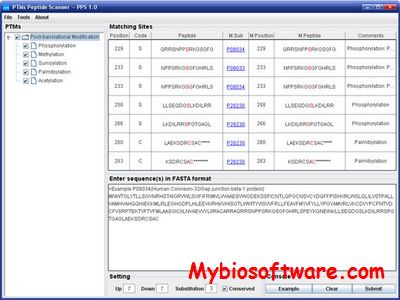LutefiskXP 1.0.7 / Lutefisk
:: DESCRIPTION
Lutefisk is software for the de novo interpretation of peptide CID spectra.High quality tandem mass spectra of peptides are often obtained for which no exact database match can be made. Consequently, we are faced with the question of whether the protein under investigation is novel, or if the non-matching spectra are due to less exciting prospects such as inter-species variation, database sequence errors, or unexpected proteolytic cleavages. To begin addressing this problem we perform a de novointerpretation of the CID spectra using the computer program Lutefisk; however, any such interpretations nearly always yield multiple sequence candidates, where it is often difficult or impossible to distinguish the correct sequence from the incorrect ones. The variations between candidate sequences are often minor and typically involve dipeptide inversions, swapping of dipeptides of the same mass, replacements of dipeptides with single amino acids of the same mass, and replacements of amino acids by dipeptides of the same mass. We use the multiple sequence candidates produced by Lutefisk as query sequences in a second program, CIDentify. CIDentify is a version of Bill Pearson’s FASTA algorithm modified by Alex Taylor to accommodate MS nuances such as multiple query sequences, ambiguous dipeptides and isobaric mass equivalencies.
::DEVELOPER
Richard S. Johnson( jsrichar@alum.mit.edu)
:: SCREENSHOTS
N/A
:: REQUIREMENTS
- Linux/windows/MacOsX
- C++ compiler
:: DOWNLOAD
 LutefiskXP
LutefiskXP
:: MORE INFORMATION
Citation
R. S. Johnson and J. A. Taylor (2002)
“Searching sequence databases via de novo peptide sequencing by tandem mass spectrometry“,
Mol. Biotechnology Vol. 22, No. 3. (November 2002), pp. 301-315.

